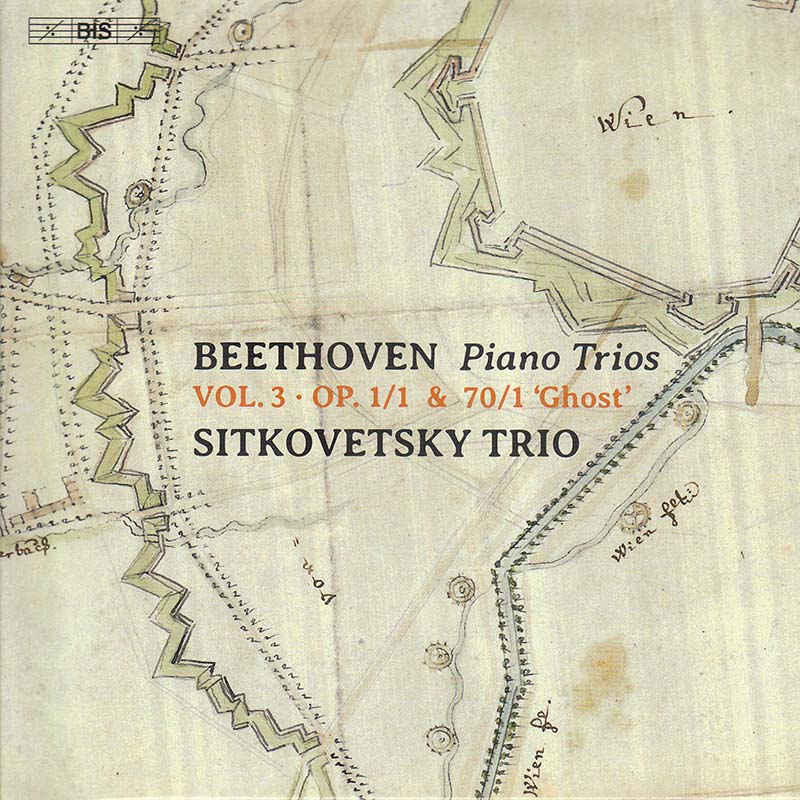
Ludwig van Beethoven
Piano Trio in D major (Ghost)
Piano Trio in E flat major
Piano Trio in D major (Ghost)
1. I. Allegro vivace e con brio
2. II. Largo assai ed espressivo
3. III. Presto
Piano Trio in E flat major
4. I. Allegro
5. II. Adagio cantabile
6. III. Scherzo
7. IV. Finale
8. Schöne Minka, ich muss scheiden
‘The masterpiece of our time in the trio genre’ is how Robert Schumann described Mendelssohn’s Piano Trio in D minor when he reviewed the work upon its publication in 1840. Comparing it to the trios by Beethoven and Schubert, Schumann continued: ‘a very beautiful composition, which in years to come will continue to delight our grandchildren and great-grandchildren.’ And so it has – the D minor trio remains one of the most popular of Mendelssohn’s chamber works, uniting the composer’s gift for melody with his feeling for textures and formal mastery. Considering how naturally the music flows, it is somewhat surprising to lean that Mendelssohn revised the work extensively at least twice before publication – the last time on the advice of the pianist Ferdinand Hiller, who suggested that some of the piano writing was ‘rather old-fashioned, to put it bluntly.’
Mendelssohn made substantial revisions to the piano part, and later commented that ‘pianists will enjoy playing it because it also gives them an opportunity to show off.’ A few years later the Piano Trio No.2 in C minor flowed more easily from his pen, and was composed between February and April 1845. An intensely emotional first movement is followed by a blissful Andante espressivo and a shimmering, truly Mendelsohnian Scherzo. The Finale returns to the passionate mood of the opening, but in the course of the movement hymn-like allusions appear and lend an air of sacred celebration to the movement.
These two highpoints in the Romantic repertoire for piano trio are here performed by the young Sitkovetsky Trio. The ensemble made their début on disc in 2014 with recordings of trios by Dvořák and Smetana, to critical acclaim: ‘A grandiose recording by three grandiose young musicians, forming a trio of great integrity’, was the verdict in the German magazine Ensemble, which also chose the disc as its ‘Five Star Recording’.
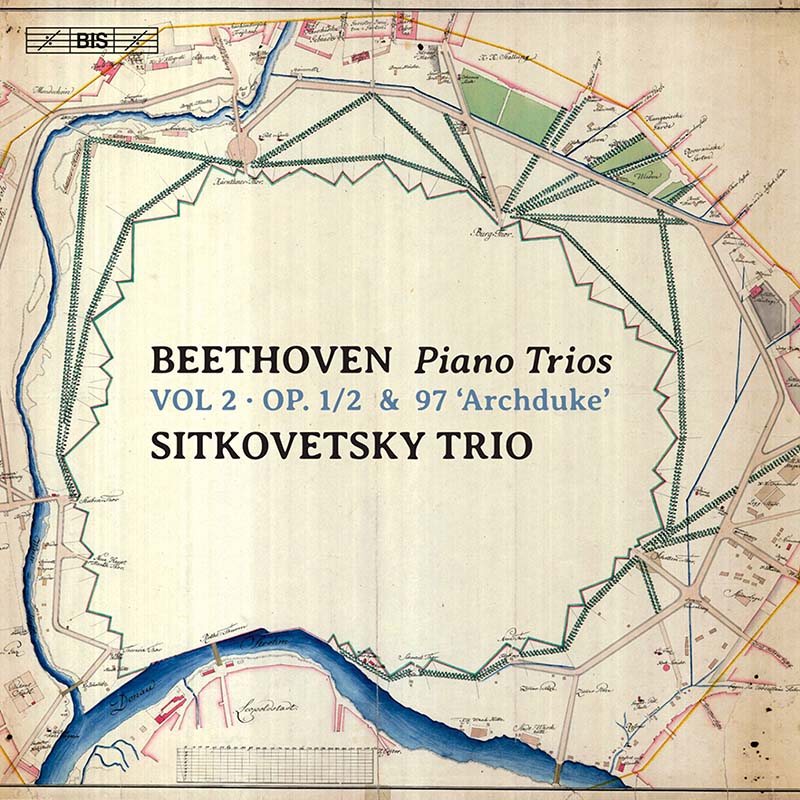
Ludwig van Beethoven
Piano Trio in G Major, Op. 1 No. 2
Piano Trio in B-flat major. Op. 97, ‘Archduke’
The acclaimed Sitkovetsky Trio takes on Beethoven’s Archduke Trio
With the three piano trios, Op. 1, Ludwig van Beethoven took a genre still largely associated with salon music and raised it up to rival the string quartet. The works are innovative in form as well as in content. From this collection, the Trio in G major, Op. 1 No. 2, appears as a cheerful and engaging work. While it has been said that one could discern ‘the master’s happy youth […] still unclouded, light and frivolous’, hints of ‘the deep seriousness and tender intimacy that would follow’ can also be found.
Knowing very well that well-placed dedications could result in princely rewards, Beethoven dedicated his Piano Trio in B flat major, Op. 97, to the Archduke Rudolph of Austria, hence its nickname, ‘Archduke’ Trio. With this work, Beethoven bade farewell to the genre with arguably his most important contribution, a trio of which a critic wrote that in it ‘genius, art, nature, truth, spirit, originality, invention, execution, taste, power, fire, imagination, loveliness, deep feeling and lively jesting entwine in sisterly harmony’.
After the success of its Ravel and Saint-Saëns trios recording, the Sitkovetsky Trio presents the eagerly awaited second instalment of its series devoted to Beethoven’s piano trios.
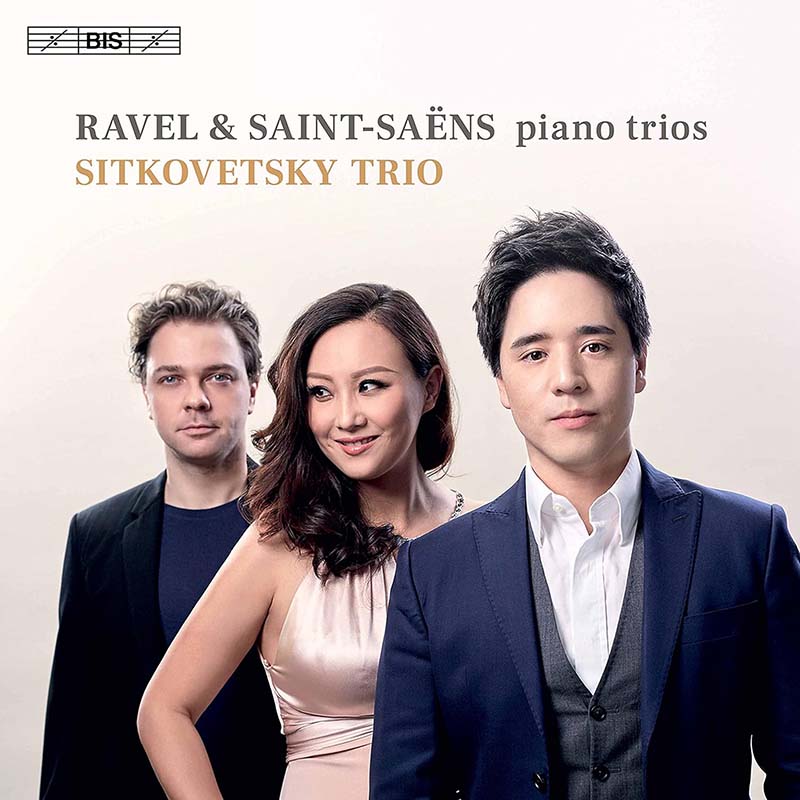

Maurice Ravel
Piano Trio in A minor
Camille Saint-Saëns
Piano Trio No. 2 in E minor, Op. 92
In 1892, when Camille Saint-Saëns started on his Piano Trio No. 2, almost 30 years had passed since his first, widely celebrated work in the genre, his Op. 18. In the meantime the composer had come to be regarded as hopelessly old-fashioned by many of his colleagues. In writing the trio, Saint-Saëns remained true to his principles as a composer, striving for balance and clarity and avoiding the chromaticism that had become so prevalent in the wake of Wagner. It is nevertheless an unexpectedly personal work, cast, in the unusual form of a symmetrical arch in five parts: two substantial and dramatic Allegros frame three shorter movements, without a proper scherzo or a true slow movement.
Some 20 years later, shortly before the outbreak of World War I, Maurice Ravel set about composing his own piano trio, in spite of his conviction that the percussive sound of the piano and the sustained singing of the string instruments were fundamentally incompatible. According to Ravel, only Saint-Saëns – who he admired greatly – had managed to solve this problem. If Saint-Saëns was an inspiration to Ravel when composing his Piano Trio in A minor, there were also other influences: the work was written during a stay in the Basque country where Ravel was born and the theme that opens the first movement displays what he himself called ‘a Basque colour’, employing the characteristic rhythms of the zortziko. The two works are here performed by the Sitkovetsky Trio, who have previously won great acclaim for their recordings of Mendelssohn, Beethoven and Dvorák.
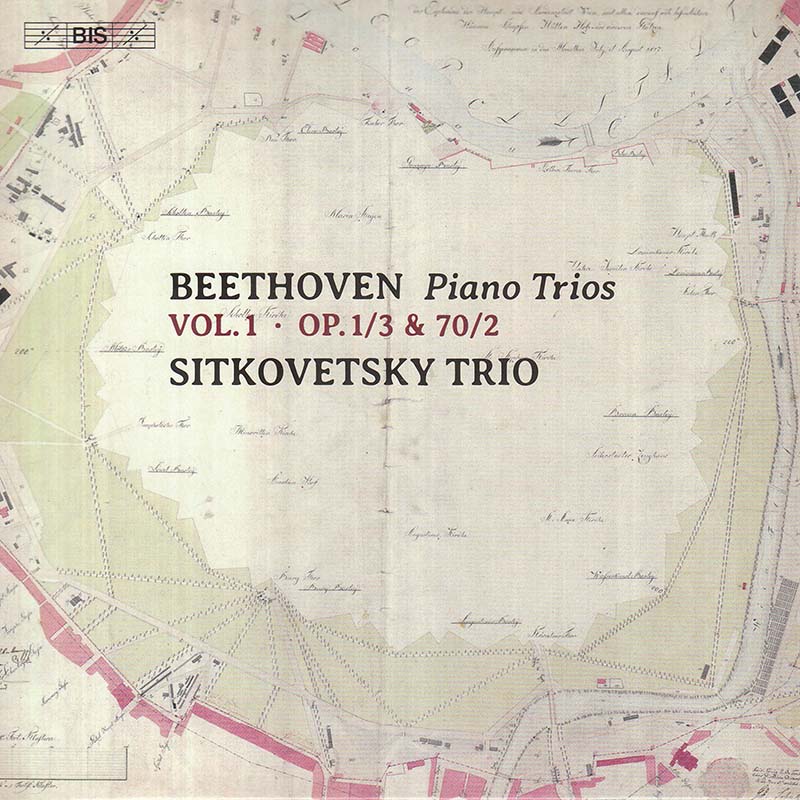
Ludwig van Beethoven
Piano Trio in C minor, Op. 1 No. 3
Allegretto in B flat major, WoO 39
Piano Trio in E flat major, Op. 70 No. 2
With the three piano trios Op. 1 Ludwig van Beethoven took a genre still largely associated with entertaining salon music, and raised it up to rival the string quartet. The works are innovative in form as well as in content – especially so in the case of the Trio No. 3 in C minor, Beethoven’s trademark key. It is therefore fitting that the Sitkovetsky Trio has chosen this work to open their cycle of the composer’s piano trios. That the C minor trio was pioneering is illustrated by the fact that Haydn, who at the time was Beethoven’s teacher, advised against its publication. He feared that it would not ‘be understood so quickly and easily’ – but the world as Haydn knew it was clearly changing and the trios became a commercial success as well as harbingers of a new musical aesthetic.
Some twenty years later, in 1813 when E. T.A. Hoffmann reviewed the two Op. 70 trios, the new era was firmly established, and to Hoffmann the works confirmed ‘how Beethoven carries the Romantic spirit of music deep within his soul’. Between the two complete trios recorded here, the Sitkovetskys include Beethoven’s very last contribution to the piano trio genre, the little Allegretto in B flat major, WoO 39. It was composed in June 1812 for Maximiliane, the ten-year-old daughter of Franz and Antonie Brentano – or, as it says on the title page of the autograph manuscript, ‘for my little friend Maxe Brentano, to encourage her piano playing’.
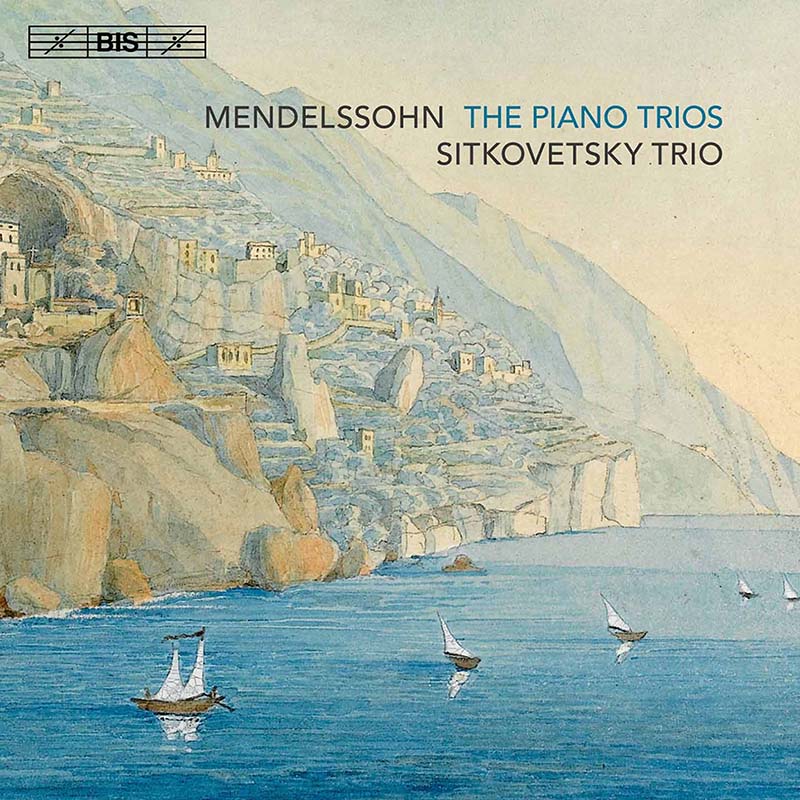
Felix Mendelssohn-Bartholdy
Piano Trio No.2 in C minor, Op.66, MWV Q33
Piano Trio No.1 in D minor, Op.49, MWV Q29
‘The masterpiece of our time in the trio genre’ is how Robert Schumann described Mendelssohn’s Piano Trio in D minor when he reviewed the work upon its publication in 1840. Comparing it to the trios by Beethoven and Schubert, Schumann continued: ‘a very beautiful composition, which in years to come will continue to delight our grandchildren and great-grandchildren.’ And so it has – the D minor trio remains one of the most popular of Mendelssohn’s chamber works, uniting the composer’s gift for melody with his feeling for textures and formal mastery. Considering how naturally the music flows, it is somewhat surprising to lean that Mendelssohn revised the work extensively at least twice before publication – the last time on the advice of the pianist Ferdinand Hiller, who suggested that some of the piano writing was ‘rather old-fashioned, to put it bluntly.’ Mendelssohn made substantial revisions to the piano part, and later commented that ‘pianists will enjoy playing it because it also gives them an opportunity to show off.’ A few years later the Piano Trio No.2 in C minor flowed more easily from his pen, and was composed between February and April 1845. An intensely emotional first movement is followed by a blissful Andante espressivo and a shimmering, truly Mendelsohnian Scherzo. The Finale returns to the passionate mood of the opening, but in the course of the movement hymn-like allusions appear and lend an air of sacred celebration to the movement. These two highpoints in the Romantic repertoire for piano trio are here performed by the young Sitkovetsky Trio. The ensemble made their début on disc in 2014 with recordings of trios by Dvořák and Smetana, to critical acclaim: ‘A grandiose recording by three grandiose young musicians, forming a trio of great integrity’, was the verdict in the German magazine Ensemble, which also chose the disc as its ‘Five Star Recording’.
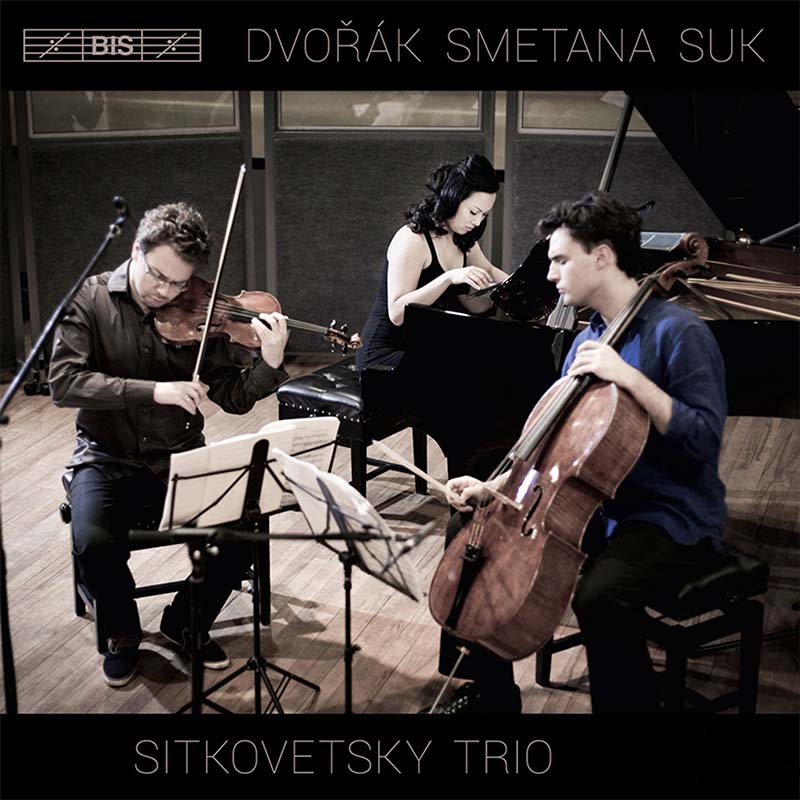
Antonín Dvořák
Piano Trio No.3 in F minor, Op.65
Bedřich Smetana
Piano Trio in G minor, Op.15
Josef Suk
Elegy for piano trio
“Die 5-Sterne-Aufnahme”, Ensemble
Supersonic, Pizzicato
“Even if you need a shoehorn to make room for this release on your shelf, I’d urge you to use one.” Fanfare
At first glance, a disc combining works by Smetana and Dvořák would appear to be a very Czech affair – after all, the two composers are among the first to be mentioned whenever nationalist currents in 19th century music are discussed. But much of their chamber music had a more personal slant, and this applies to the works presented here by the young Sitkovetsky Trio. Smetana wrote his G minor trio in 1855, ‘in memory of my first child, Bedřiška, who enchanted us with her extraordinary musical talent, and yet was snatched away from us by death, aged 4½ years’ – a shattering event for the parents, and one that seem to reverberate through the entire work. Although the background to Dvořák’s Trio Op. 65 is less well documented, it is known that at the time of its composition (in early 1893), the composer was troubled by various events: the relative failure of his opera Dimitrij’s première in October 1882, the death of his mother that December and the serious health problems afflicting Smetana, his respected older colleague. Possibly this not only coloured his mood, but also his ability to work at speed – in a letter he wrote: ‘For the past eight weeks I have worked on nothing but this new Trio, which occupies my time so completely that I can hardly think of or be aware of anything else.’ These two large-scale works are complemented here by the one-movement Elegy, by Josef Suk, Dvořák’s student and later son-in-law. Composed in 1902 as a memorial tribute for the author Julius Zeyer it was scored for violin, cello, string quartet, harp and harmonium, but soon appeared in an arrangement for piano trio which is far better known than the original. Formed in 2007, the Sitkovetsky Trio performs worldwide and has received numerous awards and critical acclaim, but is here making its début on disc, in a programme perfectly suited to the ensemble’s virtuosic and impassioned music-making.
Impresariat Simmenauer GmbH
Kurfürstendamm 211
DE-10719 Berlin
Lenemarie Leukefeld
Senior Artist Manager
+49 (0)30 414 781 721
lenemarie.leukefeld@impresariat-simmenauer.de